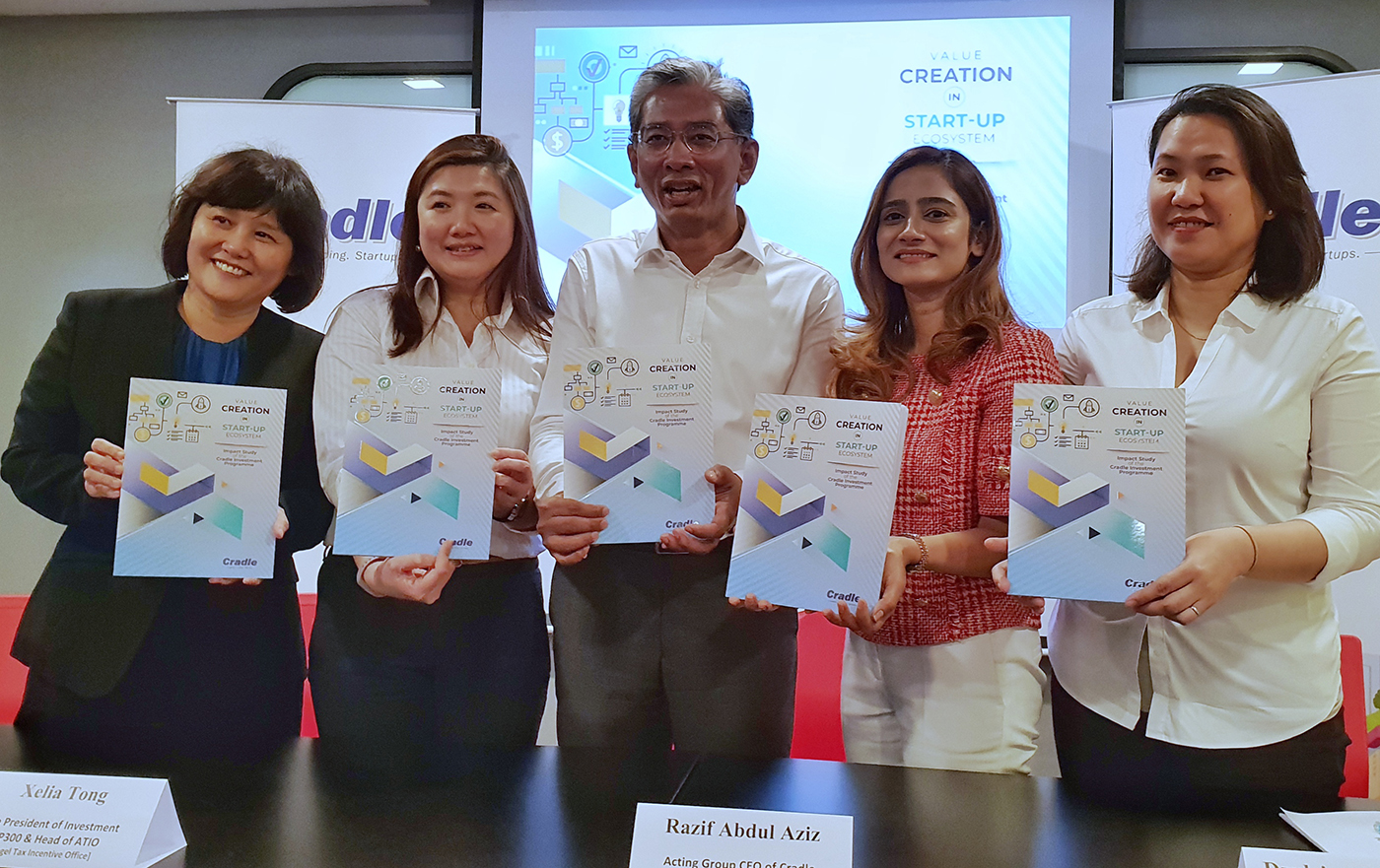Cradle study shows CIP and CGP greatly benefit local tech ecosystem
By Chong Jinn Xiung September 6, 2018
- Early stage investment in startups yields great multiplier effect
- Looks towards building communities to emulate Silicon Valley’s success

THE late Cradle Fund Sdn Bhd group chief executive officer Nazrin Hassan once asked what Cradle’s impact on the ecosystem has been, in its 15 years of existence.
This spurred Cradle in 2017, to engage HELP University to conduct an impact study titled “Impact Study of the Cradle Investment Programme (CIP) - Value Creation in Startup Ecosystem”.
Cradle had previously offered a brief glimpse of the study in July during its Cradle Buzz event and released the study in its entirety during a briefing in Kuala Lumpur.
According to Cradle, the report provides a holistic picture of how Cradle’s CIP Catalyst and CIP500 funding programme along with its Coach & Grow Programme (CGP) have contributed to the nation’s economy and promoted the local technopreneurship ecosystem.
“The CIP demonstrates that the right funding at the right time, combined with the extensive ecosystem development and support for which Cradle is known for, can bring far greater outcomes than that of ordinary public spending,” said the company’s acting group chief executive officer Razif Abdul Aziz during the press briefing.
From a public allocation of RM158.8 million from 2008 to 2016, Cradle has managed to build a sustainable tech ecosystem in Malaysia.
The early stage startup influencer has funded over 800 Malaysian tech startups and that number continues to grow today through its CIP300 pre-commercialisation grant, DEQ800 equity investment programme and its venture capital arm, Cradle Seed Ventures.
Some highlights of the study show that the CIP has contributed RM3.4 billion to Malaysia’s Gross Domestic Product (GDP) and this is projected to rise to RM30.8 billion by 2030.
Most impressively, the reported outlined how Cradle’s injection of RM50 million given to CIP recipients between 2010 to 2016 has contributed RM2 billion to the country’s GDP which is 40 times the original funds injected. Even if they were to exclude Grab’s massive foreign injection of liquidity, the GDP multiplier would still be 14 times.
“This supports the fact that early-stage funding has a strong positive effect on economic growth and is more effective than traditional public expenditure which is essentially a one-off, unlike investments in startups that continue to bring increased benefits to the economy,” said Razif.
Adding to that, the importance of startups in job creation cannot be underestimated. In this aspect, Cradle’s most notable startup investment Grab/ MyTeksi has created jobs for 80,000 drivers and that took the lion’s share of jobs created. The rest of the startups contributed approximately 600 jobs.
Razif illustrated how Cradle has played an integral part in the startup ecosystem by putting initial funding into startups, in essence taking the risk away from prospective investors and making them attractive to private investors.
“As the companies grow thanks to the investment and spend money, they will create value in the economy,” he said.
Weaknesses and areas to improve
Despite the positive aspects of the study, Razif did not shy away from the fact that it also pointed out some weaknesses in Cradle that can be addressed. Among them was the fact that the majority of startups invested in by Cradle tend to be in the digital space only, pointing to a lack of diversity in its portfolio.
“So far we have not invested in any hard science startups, particularly those in the life sciences or biotechnology space. The challenge is that many of them require more money than the average tech startup,” he said, adding that Cradle needs to reach out into more sectors.
While many in the startup space know Cradle, Razif admits that not everybody knows about Cradle outside of the usual circles. “We need to step up on our outreach effort and raise our profile. It is a constant exercise that we need to undertake,” he said.
Cradle’s vice president of investment (Catalyst) Xelia Tong added that feedback from CIP recipients showed many demands for stronger market access to deals and government agencies. The speed in the disbursement of funds also could be improved, she added.
Apart from that she also noted that many are also demanding for specific training in relation to valuation and marketing.
Part of Cradle’s steps to improve is to build more communities, an essential ingredient to the success of tech hubs like Silicon Valley, Mission Bay in San Francisco and San Diego. Taking inspiration from these places, Cradle hopes to build a similar model where co-working spaces like @CAT in Penang and WorQ in Kuala Lumpur can act as petri dishes for the local startup ecosystem to mingle and collaborate.
Related Stories:
Coach and Grow Programme participants pitch to Singaporean investors
Cradle contributes substantially to country’s GDP and jobs
Clarion call for mentors sparks Digerati50 networking session
For more technology news and the latest updates, follow us on Facebook, Twitter or LinkedIn


